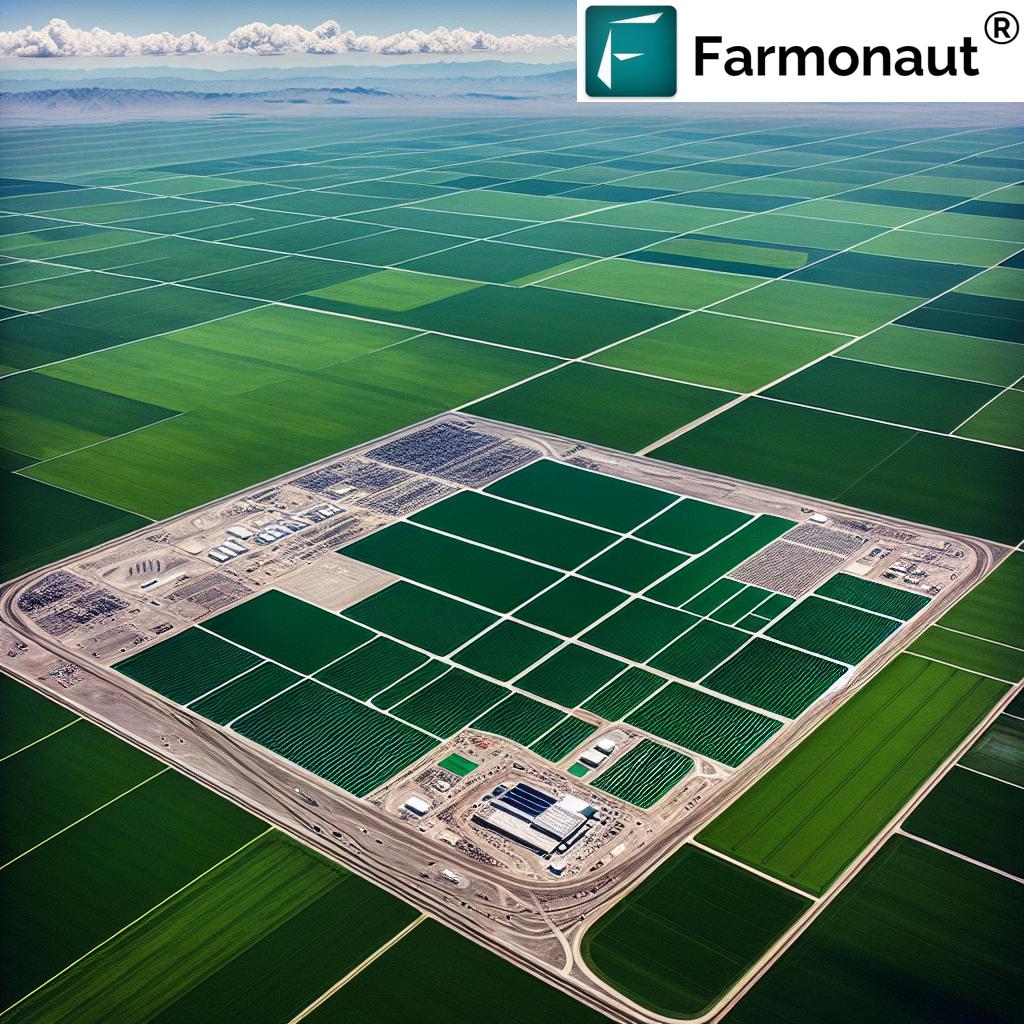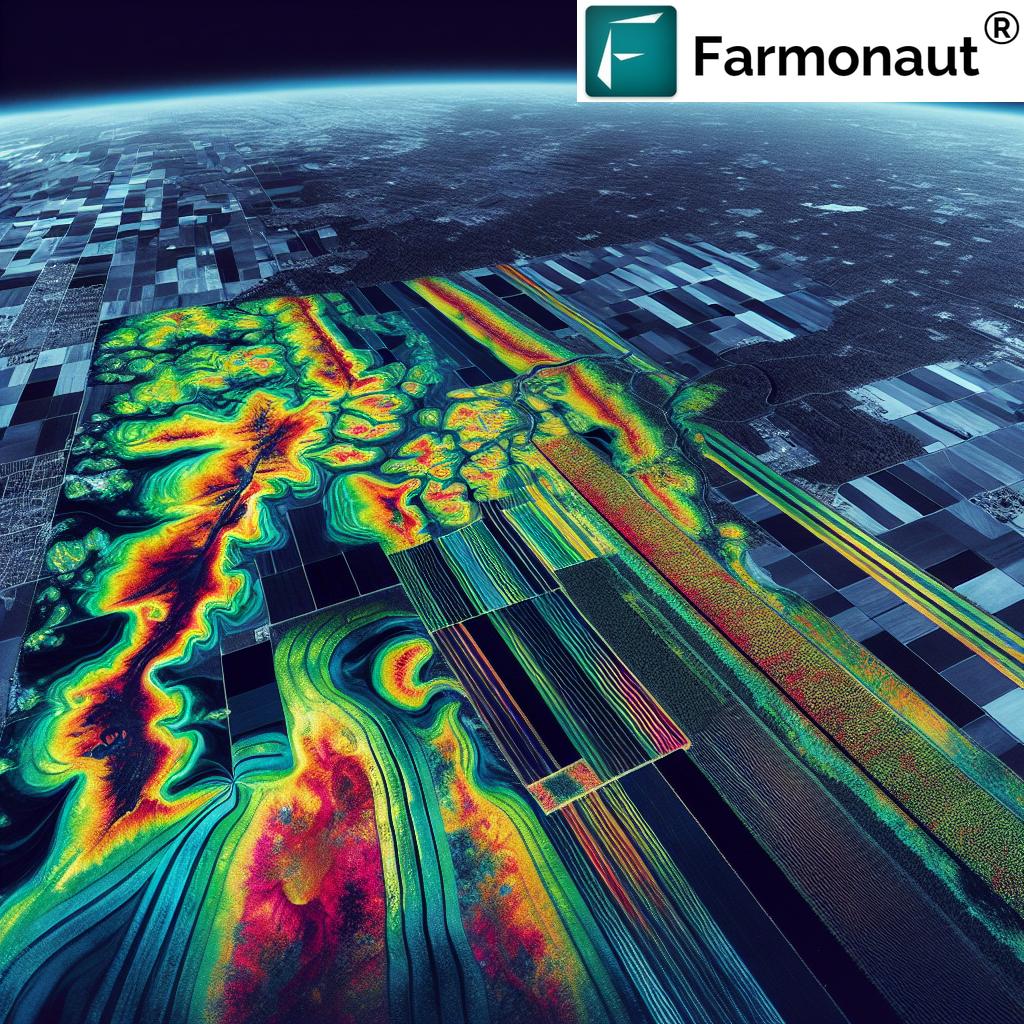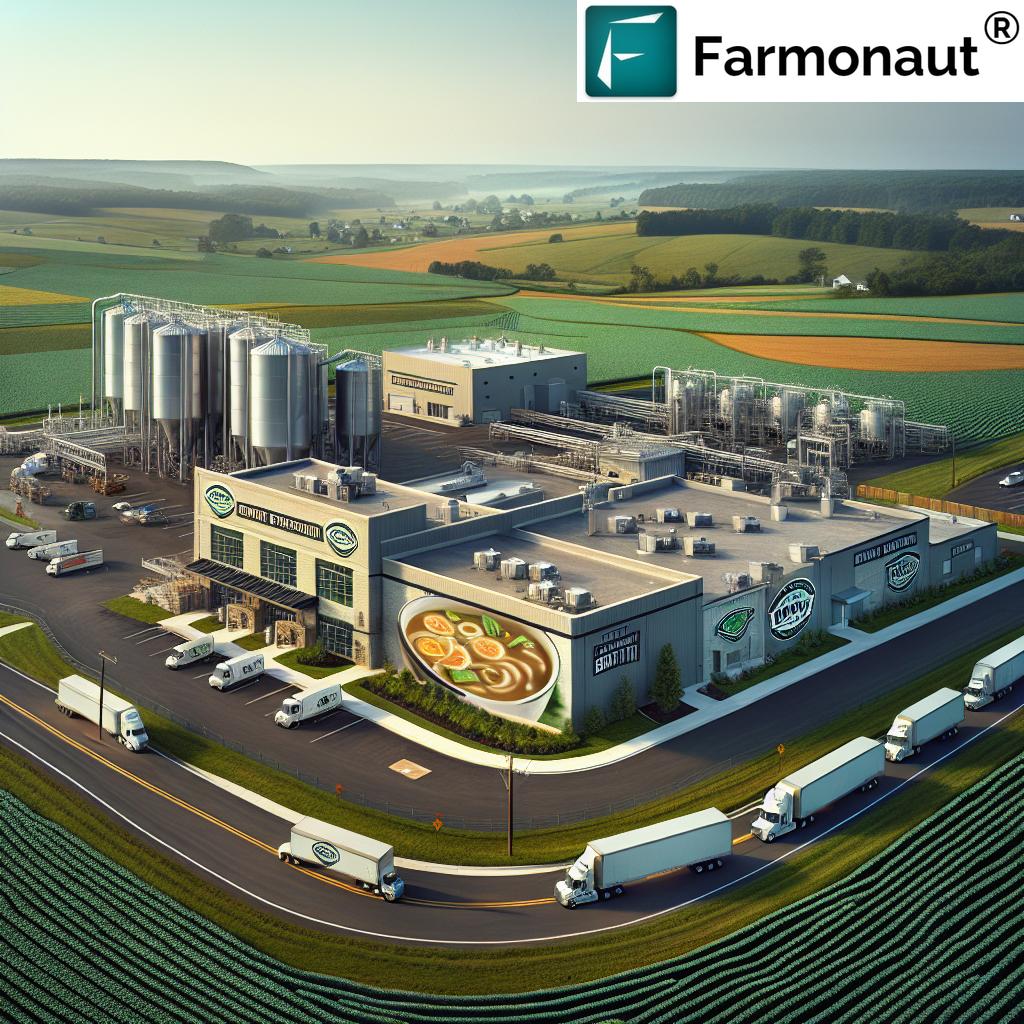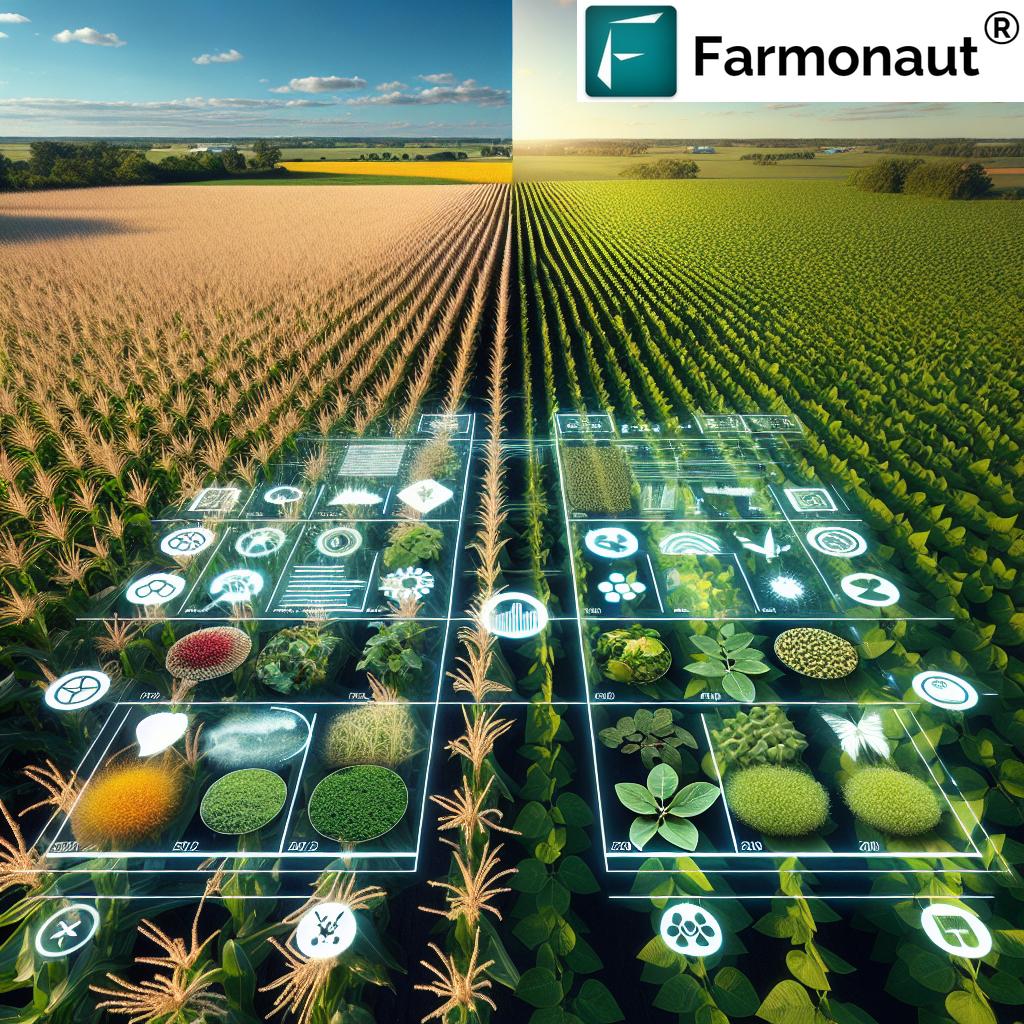Idaho’s Agricultural Landscape Shifts: Data Center Development Sparks Community Debate on Farmland Rezoning
“A 620-acre data center project in Idaho sparked debate, leading to a narrow 3-2 city council vote for rezoning agricultural land.”
In the heart of Idaho’s agricultural landscape, a significant transformation is underway. The fast-growing city of Kuna finds itself at the crossroads of tradition and technology as a new data center development project ignites a passionate community debate. This comprehensive exploration delves into the complex issues surrounding the rezoning of farmland for industrial use, examining the far-reaching implications for local residents, the economy, and the future of rural Idaho.
The Catalyst: A 620-Acre Technology Park
At the center of this controversy is a proposed 620-acre technology park that promises to bring substantial investment to the area. Kansas-based Diode Ventures plans to construct the Gemstone Technology Park at the intersection of South Locust Grove and Barker, a project that has captured the attention of both supporters and critics alike.
The city council’s recent 3-2 vote to rezone the area from agricultural to light industrial use has paved the way for this ambitious development. However, the decision has not been without its share of contention, reflecting the broader challenges faced by rural communities as they grapple with the pressures of growth and modernization.

Community Concerns: Traffic, Power, and Taxes
As we delve deeper into the issue, it becomes clear that the community’s apprehensions extend far beyond the simple loss of farmland. Residents have voiced a multitude of concerns, with traffic topping the list. The prospect of an additional 1,600 vehicle trips per day has many locals worried about the impact on Kuna’s rural roads and the overall quality of life in the area.
Sid Anderson, a concerned community member, articulates this sentiment: “My initial concern, absolutely, is traffic. It’s nearly 1,600 traffic vehicle trips a day … that’s a lot, especially for this community.”
In response to these valid concerns, Diode Ventures has proposed that Locust Grove would serve only as a secondary or emergency access to the facility. However, this assurance has done little to quell the unease among residents who fear the long-term consequences of such a significant increase in local traffic.
Power Consumption and Environmental Impact
Another pressing issue is the data center’s projected power consumption. With an estimated requirement of 600-800 megawatts, questions arise about the strain this might place on Idaho Power’s infrastructure and the potential environmental implications of such energy-intensive operations.
This is where innovative solutions like those offered by Farmonaut’s carbon footprinting technology could play a crucial role. By providing real-time data on emissions and energy usage, such tools could help both the data center operators and the community monitor and mitigate environmental impacts effectively.
Tax Implications and Economic Benefits
The financial aspects of the project have also come under scrutiny. Rep. John Gannon, D-Boise, expressed concern about property tax fairness, noting that the facility’s value would be capped at $400 million, even if the total investment exceeds $1 billion.
Mayor Joe Stear, however, sees potential benefits in the project’s tax implications. He argues that the commercial tax revenue from the data center could help balance the city’s tax burden, which has historically relied heavily on residential property taxes.
“We’ve always been heavily reliant on residential property tax burden, and this gives us some more commercial tax. It kind of helps balance that out and take some of the tax implications off of the homeowners,” Stear explained.
The Promise of Economic Growth
Proponents of the data center development emphasize the significant economic opportunities it could bring to Kuna. Diode Ventures has stated that the project “provides a substantial local investment in the tune of billions.” During the construction phase, the facility is expected to create approximately 800 jobs, although this number will decrease to around 100 once the data center is fully operational.
This influx of investment and job creation could potentially transform Kuna’s economic landscape, providing new opportunities for local businesses and residents alike. However, it’s crucial to consider whether these benefits outweigh the potential drawbacks and long-term changes to the community’s character.
Balancing Progress and Preservation
“The Idaho data center development’s impact on local traffic is a concern, with potential increases in daily vehicle trips.”
The debate surrounding the Gemstone Technology Park encapsulates a broader dilemma faced by many rural communities across the United States. As technology advances and the demand for data centers grows, agricultural regions are increasingly seen as attractive locations for these facilities due to their vast open spaces and often lower land costs.
However, this trend raises important questions about land use, community identity, and the future of farming in America. The rezoning of agricultural land for industrial use is not just a local issue but part of a larger national conversation about sustainable development and the preservation of rural ways of life.

The Role of Technology in Modern Agriculture
While the debate in Kuna focuses on the conversion of farmland to industrial use, it’s worth noting that technology also plays an increasingly vital role in modern agriculture. Companies like Farmonaut are at the forefront of this agricultural revolution, offering innovative solutions that can help farmers optimize their operations and adapt to changing conditions.
For instance, Farmonaut’s crop plantation and forest advisory services utilize satellite imagery and AI to provide farmers with real-time insights into crop health, soil moisture levels, and other critical metrics. This technology can help farmers make informed decisions about irrigation, fertilizer usage, and pest management, ultimately optimizing crop yields and reducing resource wastage.
In the context of land use debates like the one in Kuna, such technologies could potentially offer a middle ground, allowing for the preservation of agricultural land while still embracing technological advancements and economic growth.
Community Impact and Future Considerations
As Kuna grapples with this significant decision, it’s essential to consider the long-term implications for the community. The introduction of a large-scale data center will undoubtedly change the character of the area, potentially altering everything from traffic patterns to the local job market.
Mayor Stear acknowledges the complexity of the situation, stating, “I don’t like losing farmland. I really don’t … but the family has a right to sell. Mr. Yamamoto passed away here a month ago or so, and he wants his family to be set up.”
This statement highlights the personal stories behind land use decisions and the often emotional nature of these debates. For many farming families, the decision to sell their land is not taken lightly and often comes after careful consideration of their legacy and future prospects.
Comparative Analysis: Agricultural Use vs. Data Center Development
To better understand the potential impacts of this rezoning decision, let’s examine a side-by-side comparison of maintaining the current agricultural use versus developing the data center:
| Metric | Agricultural Use | Data Center Development |
|---|---|---|
| Estimated Annual Economic Impact | $5 million | $50 million |
| Projected Job Creation | 50 jobs | 100 permanent jobs (800 during construction) |
| Estimated Vehicle Trips per Day | 100 | 1,600 |
| Anticipated Power Consumption (MWh/year) | 500 | 5,256,000 – 7,008,000 |
| Projected Property Tax Revenue | $50,000 | $4 million |
| Environmental Impact Score (1-10 scale) | 3 | 7 |
| Community Impact Score (1-10 scale) | 2 | 8 |
This comparison illustrates the significant economic benefits that the data center could bring to Kuna, including substantially higher job creation and tax revenue. However, it also highlights the considerable increase in vehicle traffic and power consumption, which could have notable environmental and quality-of-life impacts on the community.
The Path Forward: Balancing Growth and Preservation
As Kuna moves forward with this development, it will be crucial for city officials, Diode Ventures, and community members to work together to address concerns and mitigate potential negative impacts. This could include:
- Implementing robust traffic management plans
- Exploring renewable energy options to offset increased power consumption
- Developing community benefit agreements to ensure local residents share in the economic gains
- Preserving green spaces and agricultural heritage through thoughtful urban planning
Moreover, the use of advanced agricultural technologies like those offered by Farmonaut could play a role in optimizing the remaining farmland in the area. For instance, Farmonaut’s large-scale farm management solutions could help local farmers increase productivity on their existing acreage, potentially offsetting some of the agricultural capacity lost to the data center development.
Lessons for Other Rural Communities
The situation in Kuna serves as a valuable case study for other rural communities facing similar development pressures. It underscores the importance of:
- Engaging in open, transparent dialogue with all stakeholders
- Conducting thorough impact assessments before making rezoning decisions
- Considering long-term sustainability alongside short-term economic gains
- Exploring innovative solutions that balance technological advancement with agricultural preservation
As more rural areas confront these challenges, tools like Farmonaut’s fleet management system could prove invaluable in helping communities optimize their resources and manage the logistical challenges that come with rapid development.
The Role of Technology in Sustainable Development
While the debate in Kuna centers on a data center development, it’s important to recognize the broader role that technology can play in sustainable rural development. Companies like Farmonaut are at the forefront of this intersection between technology and agriculture, offering solutions that can help communities adapt to changing circumstances while preserving their agricultural heritage.
For example, Farmonaut’s satellite-based crop monitoring technology could be utilized to help local farmers maximize yields on their remaining land, potentially offsetting some of the agricultural capacity lost to development. Similarly, their crop loan and insurance services could provide financial stability for farmers in the face of changing land use patterns.
Looking to the Future: A Balanced Approach
As Kuna and other rural communities navigate these complex issues, it’s clear that a balanced approach is necessary. This means:
- Embracing technological advancements that can boost economic growth
- Preserving agricultural traditions and rural character
- Investing in sustainable infrastructure to support growth
- Fostering community engagement and transparency in decision-making processes
By leveraging innovative solutions and maintaining open dialogue, communities like Kuna can chart a course that honors their agricultural roots while embracing the opportunities of the digital age.
Conclusion: A Community at a Crossroads
The debate over the Gemstone Technology Park in Kuna, Idaho, is more than just a local zoning issue. It represents a pivotal moment for a community at the crossroads of tradition and progress. As Kuna grapples with this decision, it serves as a microcosm of the challenges faced by rural communities across America in the 21st century.
The path forward will require careful consideration, open dialogue, and innovative solutions. By embracing technologies that support both agricultural optimization and industrial development, communities like Kuna can potentially forge a future that balances economic growth with the preservation of their rural heritage.
As we watch this story unfold, it’s clear that the decisions made in Kuna will have far-reaching implications, not just for this Idaho community, but for rural areas across the nation facing similar pressures. The lessons learned here will undoubtedly inform future debates on land use, community development, and the delicate balance between progress and preservation in America’s heartland.
FAQs
- What is the Gemstone Technology Park project?
The Gemstone Technology Park is a proposed 620-acre data center development in Kuna, Idaho, planned by Kansas-based Diode Ventures. - How did the Kuna City Council vote on the rezoning issue?
The Kuna City Council voted 3-2 in favor of rezoning the area from agricultural to light industrial use. - What are the main concerns of Kuna residents regarding this development?
The primary concerns include increased traffic, power consumption, and the impact on property taxes. - How many jobs is the data center expected to create?
The project is expected to create about 800 jobs during construction, reducing to around 100 permanent jobs once operational. - What is the estimated power consumption of the proposed data center?
The data center is projected to consume between 600-800 megawatts of power. - How might this development impact Kuna’s tax structure?
Mayor Joe Stear suggests that the commercial tax revenue from the data center could help balance the city’s tax burden, potentially reducing the reliance on residential property taxes. - What measures has Diode Ventures proposed to address traffic concerns?
Diode Ventures has stated that Locust Grove would only serve as secondary or emergency access to the facility to mitigate traffic impact. - How does this development reflect broader trends in rural America?
This project exemplifies the growing trend of data center developments in rural areas, driven by the availability of land and the increasing demand for data processing capabilities. - What role can agricultural technology play in this situation?
Agricultural technology, such as Farmonaut’s solutions, could help optimize remaining farmland, potentially offsetting some of the agricultural capacity lost to development. - What lessons can other rural communities learn from Kuna’s experience?
Kuna’s experience highlights the importance of community engagement, thorough impact assessments, and balancing economic opportunities with preservation of rural character in development decisions.
Earn With Farmonaut: Affiliate Program
Earn 20% recurring commission with Farmonaut’s affiliate program by sharing your promo code and helping farmers save 10%. Onboard 10 Elite farmers monthly to earn a minimum of $148,000 annually—start now and grow your income!
Farmonaut Subscriptions















